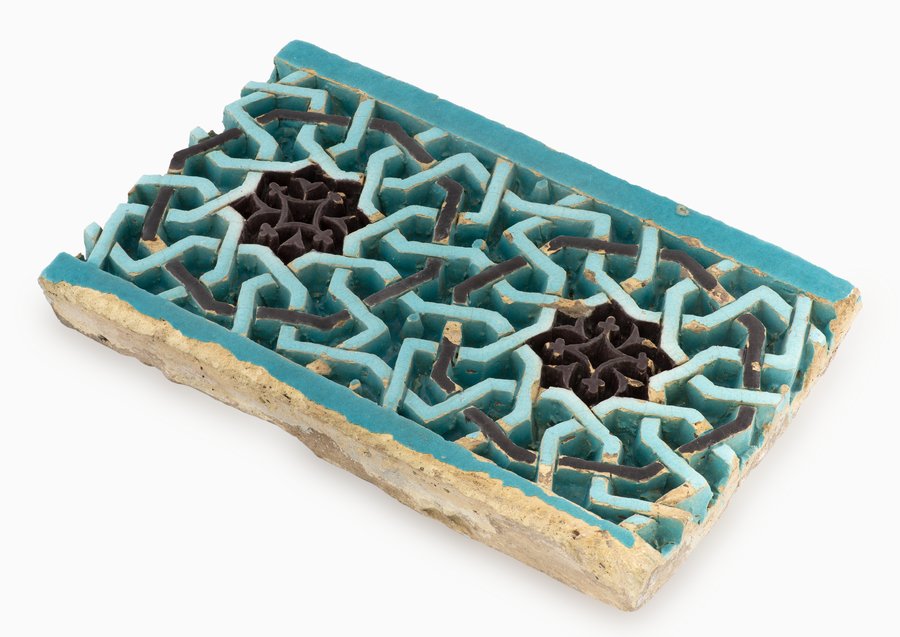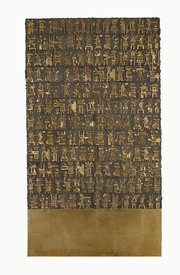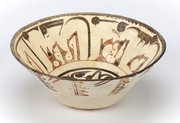
Tile
Museum of Islamic Art
- Title:
- Tile
- Production place:
- Bukhara
- Date:
- 1350 - 1400
- Period:
- Chaghatayid
- Title:
- Tile
- Production place:
- Bukhara
- Date:
- 1350 - 1400
- Period:
- Chaghatayid
- Material:
- Earthenware, Glaze
- Technique:
- Carving, Glazing
- Dimensions:
- 20.3 × 32.5 cm
The restrained palette of turquoise and manganese-purple glazes of this tile highlights its complex geometric decoration of interlaced strapwork centered around a stylised floral motif.
In order to create such complex pattern, the craftman would have had to deeply carve the tile surface basing his work on a geometric diagram, in this case. Glazed tilework progressively became a popular feature in architectural decoration of both secular and religious complexes in Central Asia from the Ghaznavid period onwards. This specific tile has been identified as coming from the mausoleum of Buyun Quli Khan in Bukhara (present-day Uzbekistan). Buyun Quli was a minor and ineffective fourteenth-century ruler of the Chagatay Khanate branch of the Mongol Empire, executed in Samarqand in 759 AH (1358 CE). The funerary complex, probably erected a few years later by some of his former supporters and relatives, is still visible in Bukhara; its simple and clear structure was originally covered in glazed tilework decoration, of which only part remains in situ.
The palette of the glazed tilework decoration has been restricted to black, white, and cobalt with touches of deep aubergine set against a rich turquoise blue background, giving the architecture an elegant and impressive unifying effect over the diverse and intricate decorative motifs, ranging from stylised floral motifs to geometric patterns and monumental inscriptions in thuluth script. The stylistic analysis of the inscriptions that once decorated the façade seems to indicate that they were the work of a local workshop. Several of the tilework panels from this funerary monument were removed and sold between the 19th and the 20th century; examples can be found in different collections worldwide, with the V&A Museum in London having a particularly comprehensive collection of fragments.



